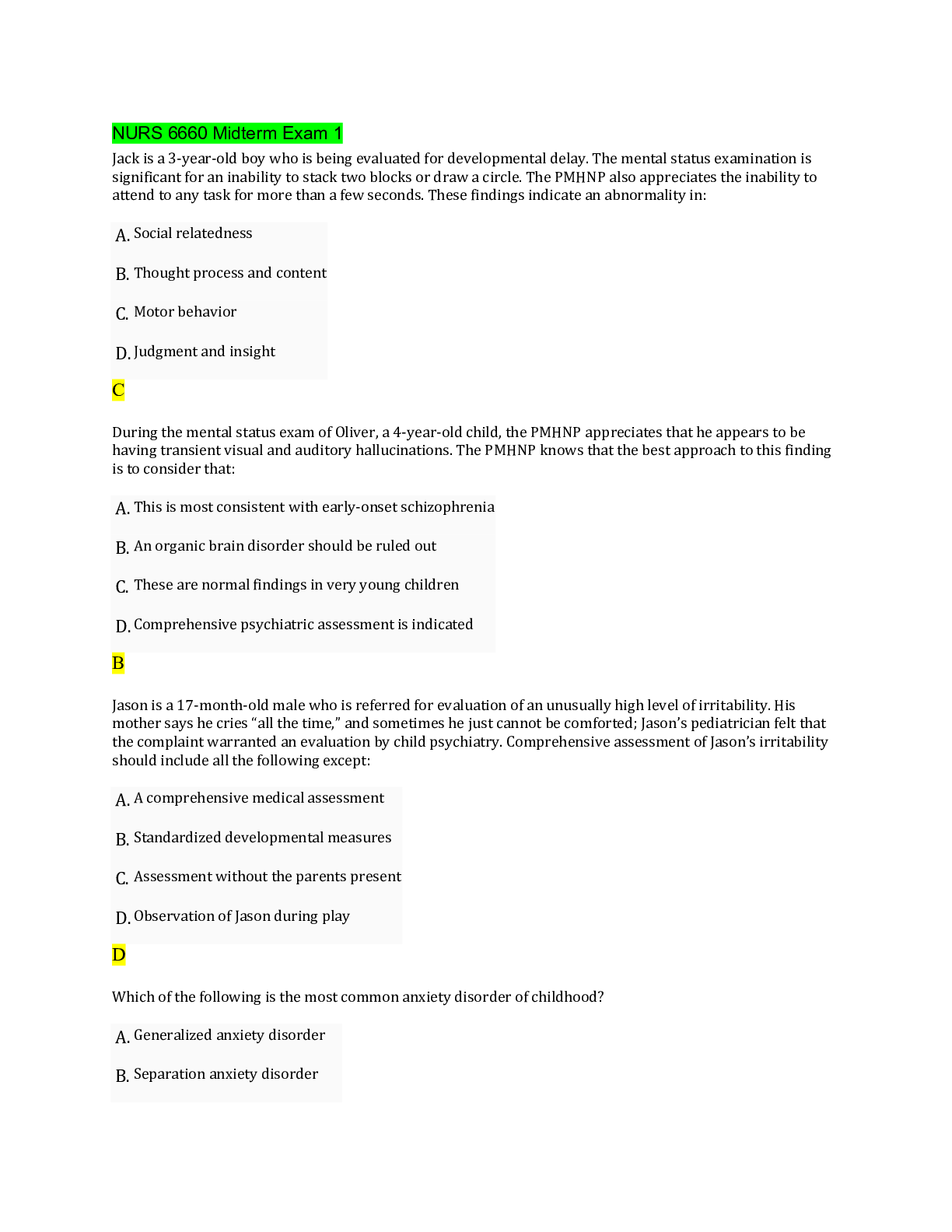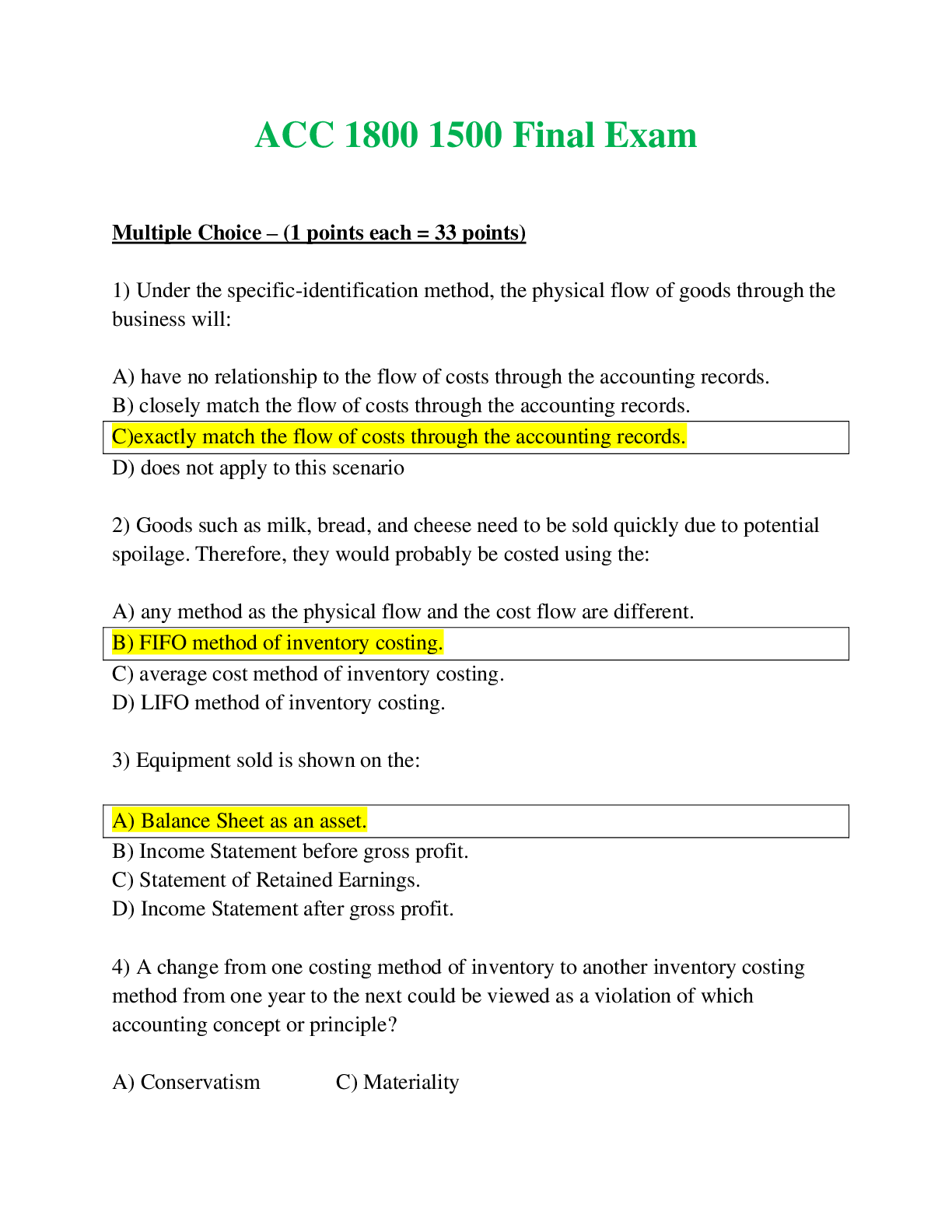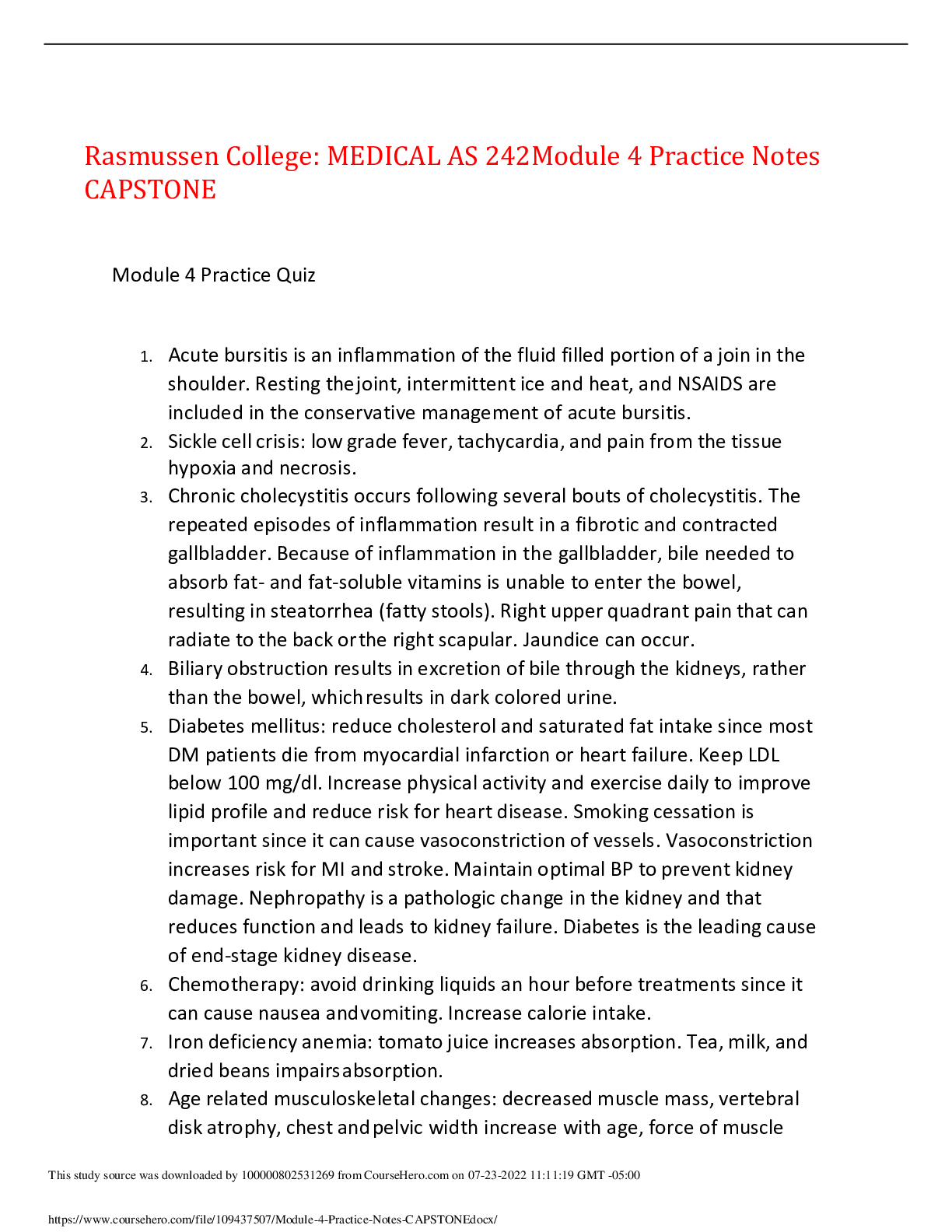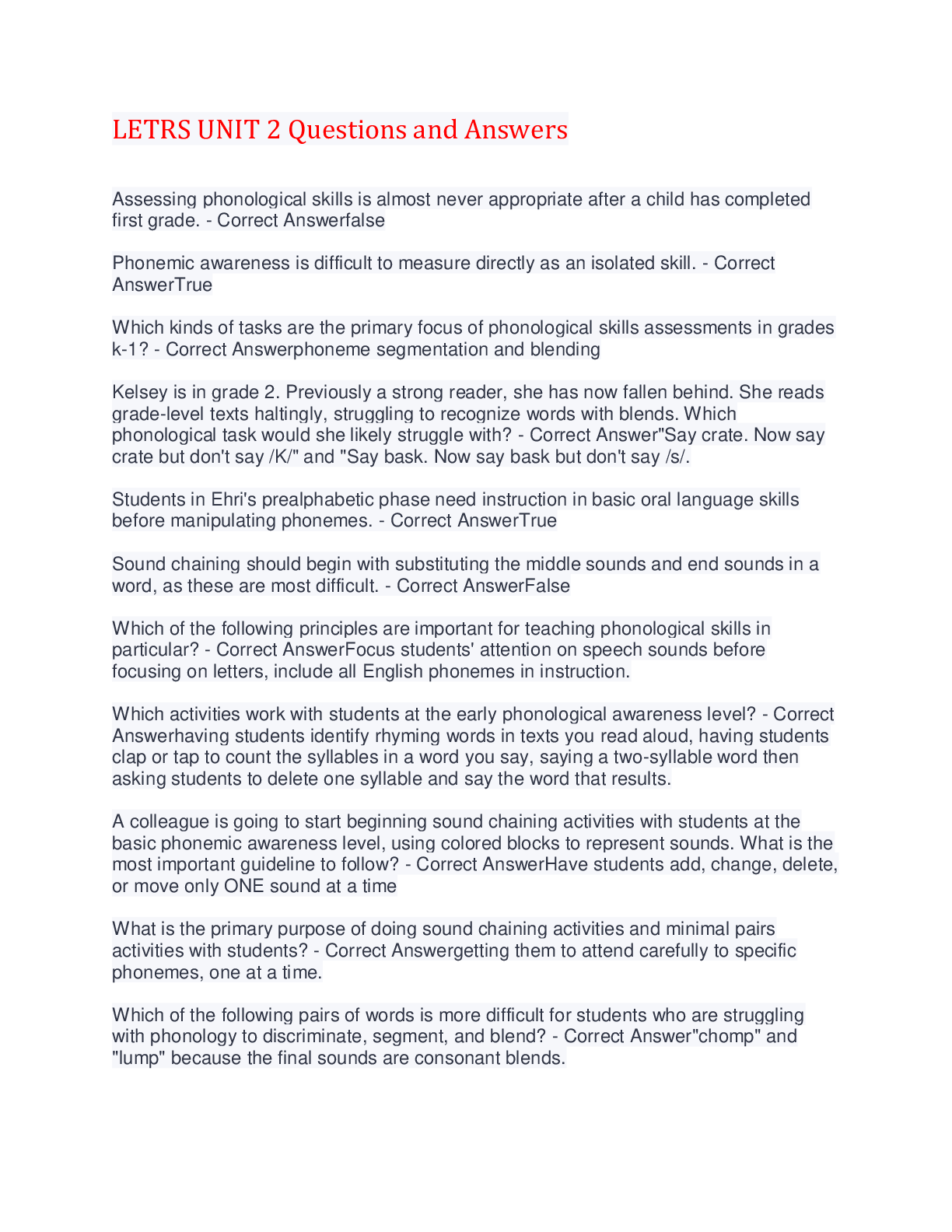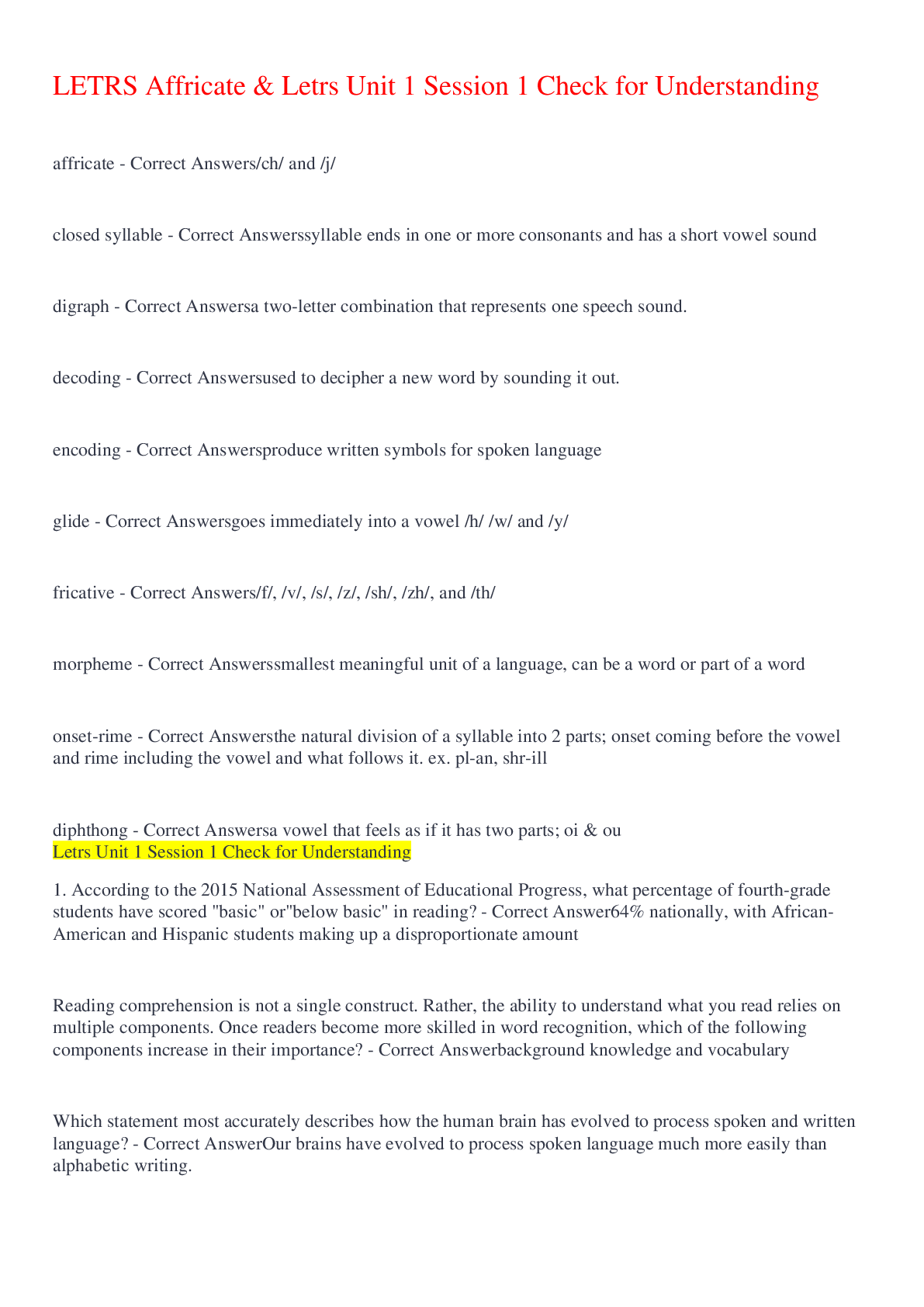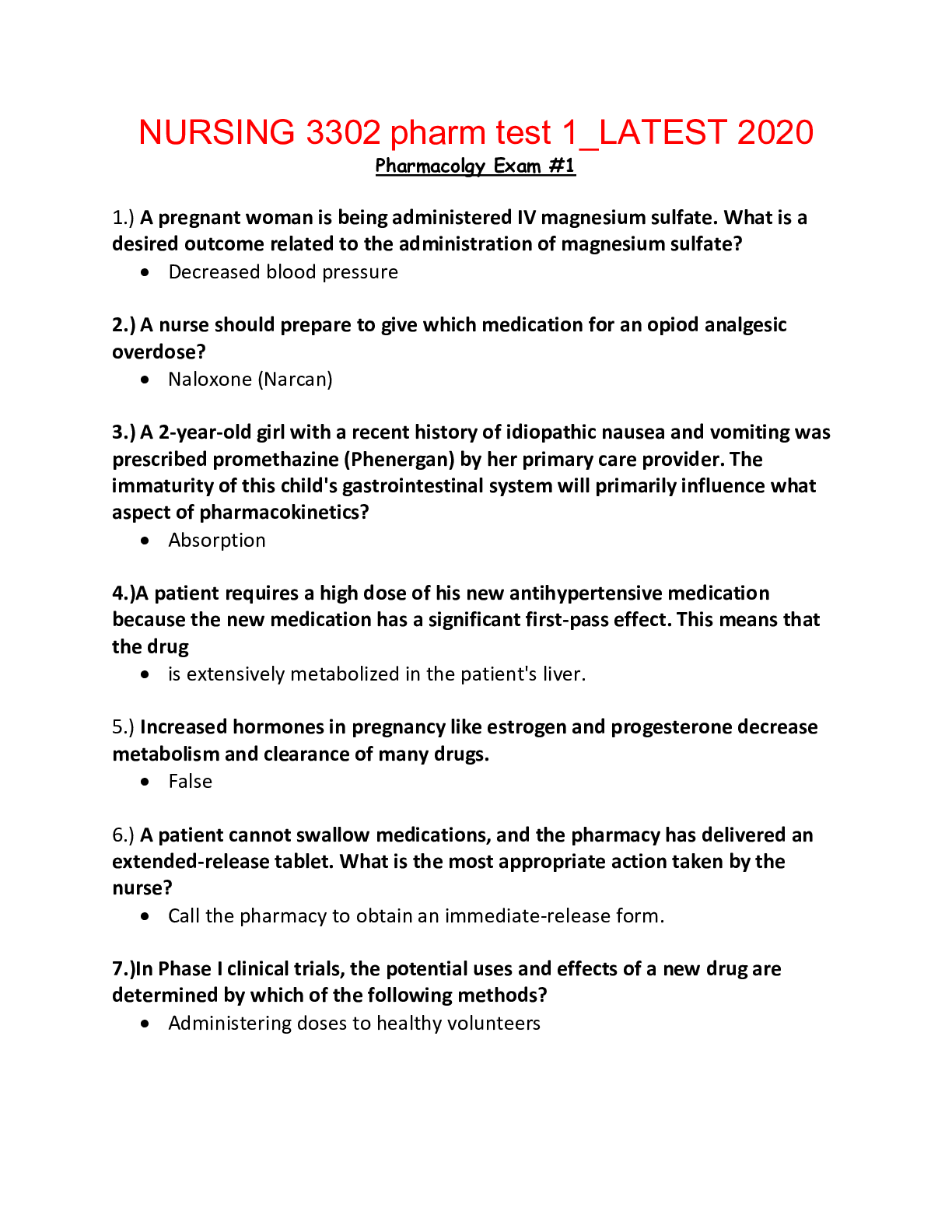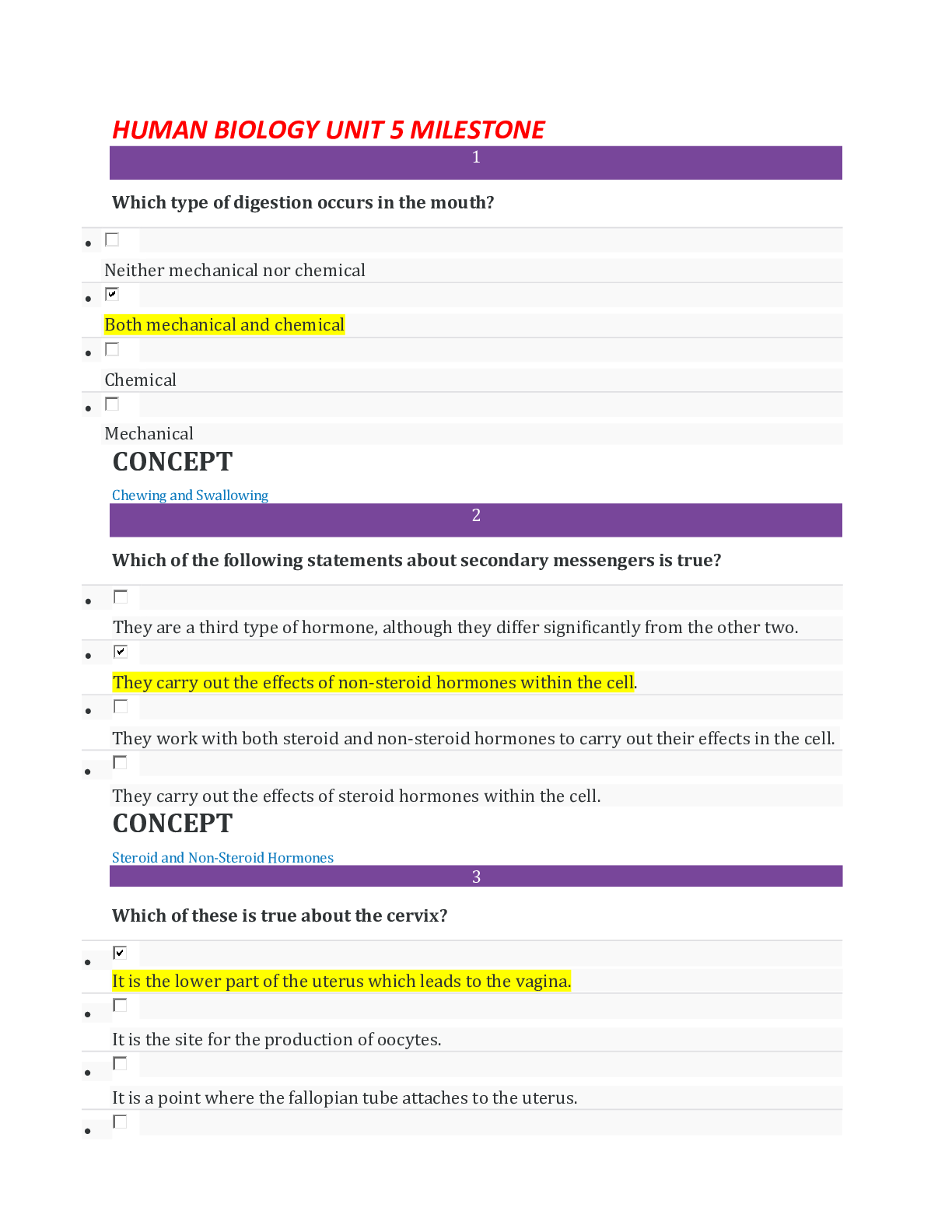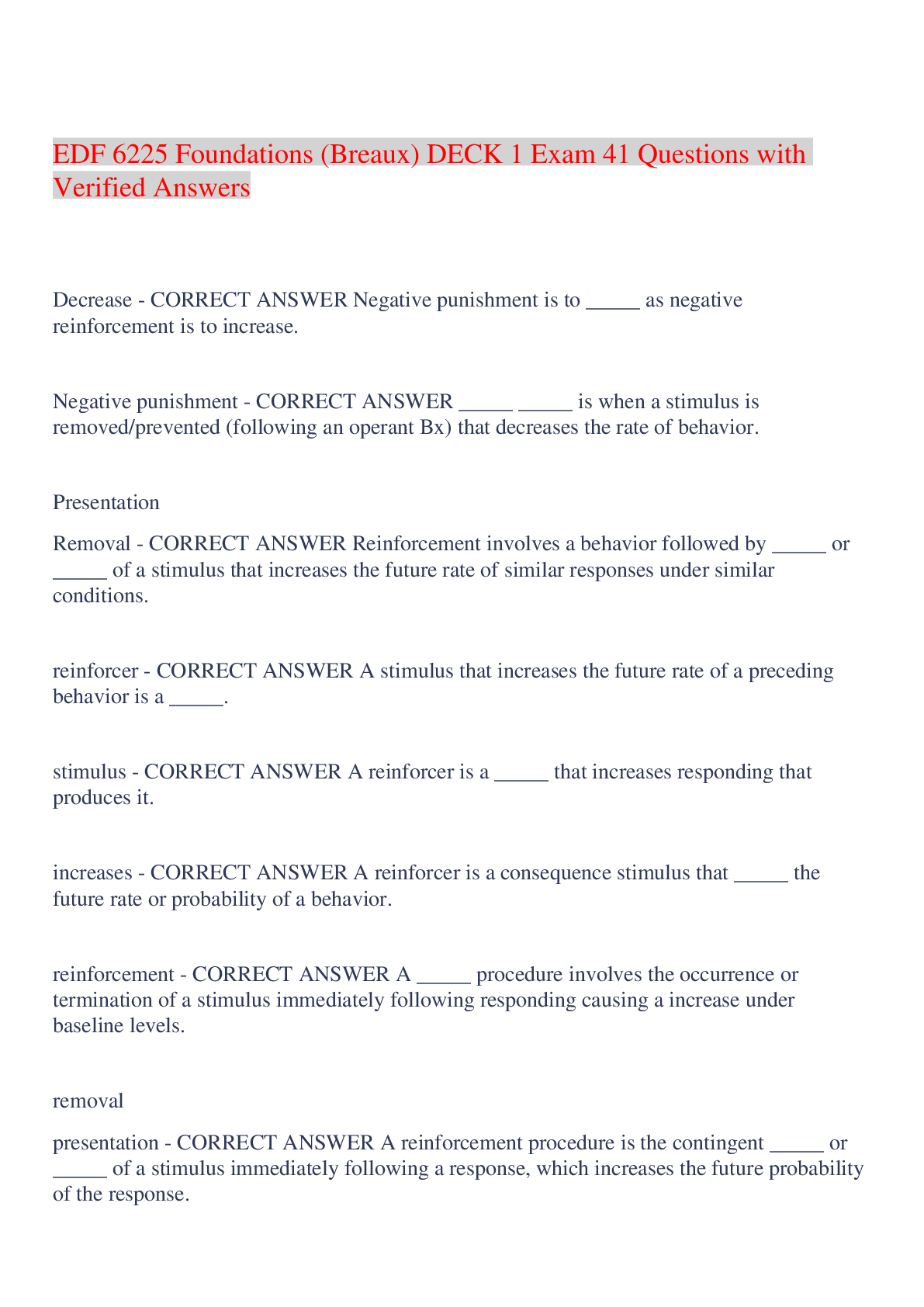NURS 6512N Week 1,100% CORRECT
Document Content and Description Below
When taking a history, you should: • Question 2 When recording physical findings, which data are recorded first for all systems? • Question 3 Objective dat... a are usually recorded: • Question 4 Which technique is most likely to result in the patient s understanding of questions? • Question 5 In issues surrounding ethical decision making, beneficence refers to the: • Question 6 Direct questioning about domestic violence in the home should be: • Question 7 Behaviors that diffuse anxiety during the interview include: • Question 8 To what extent should the patient with a physical disability or emotional disorder be involved in providing health history information to the health professional? • Question 9 When interviewing older adults, the examiner should: • Question 10 Data relevant to the social history of older adults include information on: • Question 11 When questioning the patient regarding his or her sexual history, which question should be asked initially? • Question 12 Mr. D. complains of a headache. During the history, he mentions his use of alcohol and illicit drugs. This information would most likely belong in the: • Question 13 When you enter the examination room of a 3-year-old girl, you find her sitting on her father s lap. She turns away from you when you greet her. Initially, your best response is to: • Question 14 Mrs. G. reports an increase in her alcohol intake over the past 5 years. To screen her for problem drinking, you would use the: • Question 15 Differential diagnoses belong in the: • Question 16 Information recorded about an infant differs from that of an adult, mainly because of the infant s: • Question 17 Which of the following formats would be used for visits that address problems not yet identified in the problem-oriented medical record (POMR)? • Question 18 A SOAP note is used in which type of recording system? • Question 19 Your patient returns for a blood pressure check 2 weeks after a visit during which you performed a complete history and physical. This visit would be documented by creating a(n): • Question 20 An example of a complementary care modality is: [Show More]
Last updated: 2 years ago
Preview 1 out of 4 pages

Buy this document to get the full access instantly
Instant Download Access after purchase
Buy NowInstant download
We Accept:

Reviews( 0 )
$15.00
Can't find what you want? Try our AI powered Search
Document information
Connected school, study & course
About the document
Uploaded On
Jul 17, 2020
Number of pages
4
Written in
Additional information
This document has been written for:
Uploaded
Jul 17, 2020
Downloads
0
Views
67


